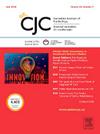一项多中心前瞻性队列研究,旨在识别可受益于超声心动图检查的高风险短暂性脑缺血发作/轻微脑卒中患者。
IF 5.8
2区 医学
Q1 CARDIAC & CARDIOVASCULAR SYSTEMS
引用次数: 0
摘要
背景:我们的目的是得出一个临床决策规则,以识别最有可能受益于超声心动图检查的短暂性脑缺血发作(TIA)/轻微卒中患者:我们旨在得出一个临床决策规则,以确定最有可能从超声心动图检查中获益的短暂性脑缺血发作(TIA)/轻微卒中患者:这项多中心前瞻性队列研究招募了2006年10月至2017年5月期间在急诊科确诊为短暂性脑缺血发作(TIA)/轻微卒中并在90天内接受了超声心动图检查的成人患者,这些患者来自加拿大的13个学术急诊科。我们的研究结果是具有临床意义的超声心动图检查结果:在7149名符合条件的患者中,556人(7.8%)发现了有临床意义的检查结果。另有2421人(33.9%)有潜在的重大发现。心力衰竭病史(调整后的比值比 [OR] 3.9)或冠状动脉疾病(OR 2.7)是与具有临床意义的超声心动图检查结果最密切相关的因素,而年轻、男性、瓣膜性心脏病和神经影像学检查中的梗塞(任何年龄)则与之关系不大(OR 介于 1.3 和 1.9 之间)。将这些预测因素合并成一个分数(范围在 0 到 15 之间)的模型的 C 统计量为 0.67(95%CI 0.65-0.70)。6分或更高的切点可将6.6%的病例归类为高可能性病例,即临床意义超声心动图结果>15%:结论:超声心动图是检查 TIA/轻微卒中患者的一项非常有用的检查。我们确定了高风险的临床特征,并结合这些特征制定了临床决策规则,以确定哪些 TIA/轻微卒中患者可能会出现有临床意义的超声心动图检查结果,需要立即改变治疗方案。这些患者应优先进行超声心动图检查,而其他患者则可以不那么紧急的方式继续进行超声心动图检查。本文章由计算机程序翻译,如有差异,请以英文原文为准。
A Multicentre Prospective Cohort Study to Identify High-Risk Transient Ischemic Attack/Minor Stroke Patients Benefitting from Echocardiography
Background
We aimed to derive a clinical decision rule to identify patients with transient ischemic attack (TIA) or minor stroke most likely to benefit from echocardiography.
Methods
This multicentre prospective cohort study enrolled adults diagnosed with TIA/minor stroke in the emergency department who underwent echocardiograms within 90 days, from 13 Canadian academic emergency departments from October 2006 to May 2017. Our outcome was clinically significant echocardiogram findings.
Results
In 7149 eligible patients, a clinically significant finding was found in 556 (7.8%). There were a further 2421 (33.9%) with potentially significant findings. History of heart failure (adjusted odds ratio [OR], 3.9) or coronary artery disease (OR, 2.7) were the factors most strongly associated with clinically significant echocardiogram findings, whereas young age, male sex, valvular heart disease, and infarct (any age) on neuroimaging were modestly associated (OR, 1.3-1.9). The model combining these predictors into a score (range: 0-15), had a C-statistic of 0.67 (95% confidence interval [CI], 0.65-0.70). A cut point of 6 points or more classified 6.6% of cases as high likelihood, defined as > 15% for clinically significant echocardiogram findings.
Conclusions
Echocardiography is a very useful test in the investigations of patients with TIA/minor stroke. We identified high-risk clinical features—combined to create a clinical decision rule—to identify which patients with TIA/minor stroke are likely to have clinically significant echocardiogram findings requiring an immediate change in management. These patients should have echocardiography prioritized, whereas others may continue to have echocardiography conducted in a less urgent fashion.
求助全文
通过发布文献求助,成功后即可免费获取论文全文。
去求助
来源期刊

Canadian Journal of Cardiology
医学-心血管系统
CiteScore
9.20
自引率
8.10%
发文量
546
审稿时长
32 days
期刊介绍:
The Canadian Journal of Cardiology (CJC) is the official journal of the Canadian Cardiovascular Society (CCS). The CJC is a vehicle for the international dissemination of new knowledge in cardiology and cardiovascular science, particularly serving as the major venue for Canadian cardiovascular medicine.
 求助内容:
求助内容: 应助结果提醒方式:
应助结果提醒方式:


